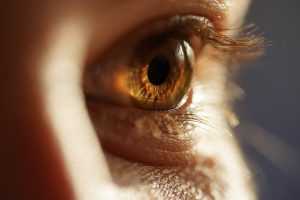Artificial Intelligence in Optometry
Makeup and costumes won’t change a thing … an artificial intelligence (AI) can now guess your age and sex simply by scanning your retina. New developments of artificial intelligence in optometry provide solutions for doctors and patients, and minimize risks. Artificial intelligence in Optometry has yet to peak in development and we expect artificial intelligence to develop further.
For decades, ophthalmologists have been analyzing images of our retina to monitor our visual health. Monitoring the retina is really essential and, above all, it allows detecting the many pathologies that can alter our retina and, therefore, our vision, sometimes irreversibly: age-related macular degeneration, glaucoma or diabetic retinopathy. These pathologies progressively reduce our field of vision, through the appearance of blind spots, and finally can make us completely blind.
A study on the use of artificial intelligence to detect “papilledema and other optic-disk abnormalities from fundus photographs” was published on The New England Journal of Medicine, Titled “Artificial Intelligence to Detect Papilledema from Ocular Fundus Photographs”.
Developments of Artificial Intelligence in Optometry

Regular monitoring allows intervention before the onset of the first symptoms, to delay its development and limit its impact: analysis of retinal images is therefore essential. However, the aging of the population increases year by year the work of ophthalmologists, whose number, meanwhile, does not increase.
Not surprisingly, researchers have seen it as an important niche for the development of medical AI: it requires large amounts of imaging to build effective models to support overworked professionals.
Glaucoma is defined as a progressive degenerative optic neuropathy with a progressive loss of retinal ganglion cells from its axon to the optic nerve, and clinically by a gradual widening of the optic nerve excavation with concordant visual field deficits. Furthermore, glaucomatous involvement precedes the first deficits in visual function, and the first deficits revealed by the automated visual field have been shown to appear when 20 to 40% of ganglion cells are lost. Therefore, the analysis of the axons of these retinal ganglion cells, either at the level of the optic nerve head or at the level of the retina, constitutes an essential element for the diagnosis of glaucomatous lesions and their progression.
The development of OCTs has revolutionized the management of glaucoma by allowing reproducible analysis with excellent axial resolution on the order of 5 microns, and thus offering close images of the histological sections of the optic nerve head and macular area. in particular Furthermore, the constant evolution of OCT acquisition and analysis software allows a more precise qualitative and quantitative analysis of the disease and its progression.
Numerous studies have demonstrated the value of OCT at all stages of glaucoma severity, as well as in suspected glaucoma cases. The high resolution of the images and the automatic segmentation that results allow us to analyze the thickness of the peripapillary nerve fibers, the parameters of the optic nerve head, as well as the layers of the macula and its node complex in particular. In clinical practice, OCTs have logically become the main device for evaluating the structure of glaucoma, either for the initial diagnosis of the disease or for the diagnosis of its course.
Read more Science and Technology News on WeeklyReviewer!

